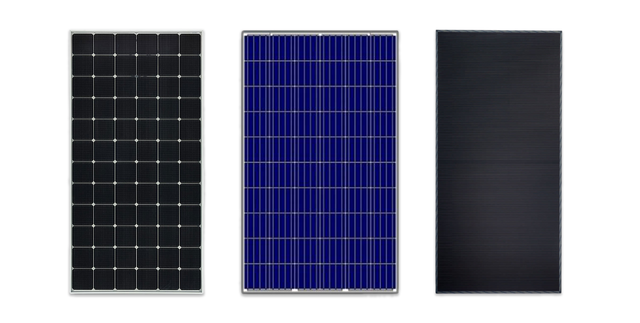The Of Solar Systems
Table of ContentsThe Single Strategy To Use For Solar SystemsSolar Systems for DummiesThe smart Trick of Solar Systems That Nobody is Talking AboutFascination About Solar Systems
There are 3 various kinds of photovoltaic panels: monocrystalline, polycrystalline, and also slim movie. Monocrystalline photovoltaic panels are extremely effective as well as have a smooth design, however come at a higher rate factor than other solar panels. Polycrystalline solar panels are less costly than monocrystalline panels, nevertheless, they are much less efficient and aren't as visually pleasing.Nowadays, there are several varieties of monocrystalline solar panels on the marketplace to pick from. Passivated Emitter as well as Back Call cells, more frequently referred to as PERC cells, are ending up being an increasingly preferred monocrystalline option. PERC cells undergo a different manufacturing and assembly process that enhances the amount of power the cells can produce.
Since monocrystalline solar cells are made from a single crystal of silicon, electrons are able to quickly flow throughout the cell, raising overall efficiency. Not only do monocrystalline panels have the greatest effectiveness ratings, they typically additionally have the greatest power capacity scores. The majority of monocrystalline panels on the market today will certainly have a power outcome ranking of a minimum of 320 watts, but can go up to around 375 watts or higher!.
Since polycrystalline cells consist of several silicon cells, the electrons can not relocate as conveniently and also therefore, lower the efficiency of the panel. The lower effectiveness of polycrystalline panels additionally indicates they tend to have a reduced power output than monocrystalline panels, typically ranging between 240 watts and 300 watts.
The Single Strategy To Use For Solar Systems
In order to meet your power needs, you would require to mount even more slim film panels over a large location to produce the same amount of electrical power as crystalline silicon solar panels. This is why slim movie solar panels do not really make feeling for residential setups where space is restricted.
The temperature coefficient informs you just how much the power outcome will certainly lower by for every single 1 * C over 25 * C the panel obtains. The standard temperature coefficient for mono as well as polycrystalline panels normally falls somewhere between -0. 3% as well as -0. 5% per * C. Thin film panels on the other hand, are around -0.
With some thin film panels, it's hard to also see the private cells within the panel. They additionally often tend to have less wiring and also busbars, my blog suggesting there's much less white area. However, due to the fact that they are so ineffective, you would require to cover your whole roofing in slim movie panels - which might or might not be your design.

Some manufacturers have actually functioned around this with black packaging or shaping the cells in a different way, yet these aesthetic modifications can affect both the price and performance of the panels. In general, monocrystalline panels still look sleek, yet they're a little bit more obvious than slim film panels. solar systems. The procedure in which polycrystalline solar batteries are produced triggers the cells to have a blue, marbled look.
What Does Solar Systems Do?
If you get on a tight budget, polycrystalline panels could make more feeling for you. We do not suggest thin film solar panels for my response residential installments - their efficiency and also longevity don't make the inexpensive worth it, as well as it's not likely you'll have nearly sufficient area to set up the number of slim movie panels you would require to cover your household electrical energy usage.
Since they are made from pure silicon, they can be easily recognized by their dark black color. The use of pure silicon additionally makes monocrystalline panels the most space-efficient as well as longest-lasting amongst all 3 solar panel kinds. However, this comes at a price a lot of silicon is squandered to produce one monocrystalline cell, often getting to over 50%.

Amorphous silicon panels (A-Si) obtain their name from their unformed nature. Unlike mono-and polycrystalline solar batteries, the silicon is not structured on the molecular level. Typically, an a-Si cell calls for just a fraction of the silicon needed to create normal silicon cells. This enables them to have the most affordable production price, at the expenditure of efficiency.
Some Known Incorrect Statements About Solar Systems
50 $0. 50 $0. 50 Note that these numbers do not include the cost of installation and also labor.

This means that thin-film panels can be a great option for hotter environments or locations that experience even more sunshine throughout the year. The upgraded International Building regulations of 2012 calls for solar panels get redirected here to match the fire rating of the roof where they are mounted. This is to make sure that the components do not speed up the spread of fires in case of a fire.